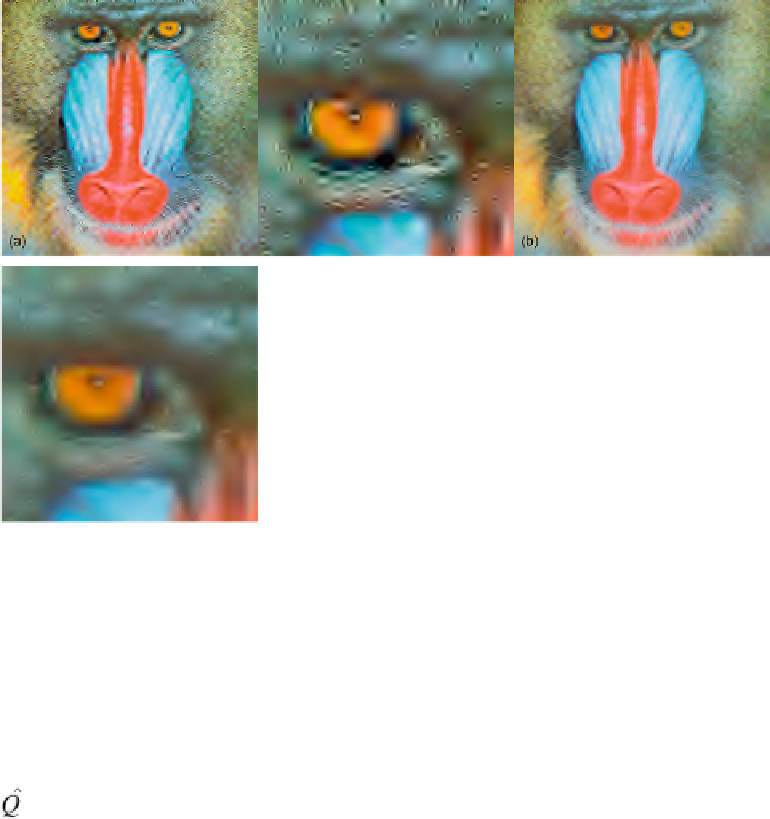Image Processing Reference
In-Depth Information
FIGURE 4
Examples of recovered images of Baboon. (a) JPEG2000 compressed at
0.59 bpp. (b) JPEG2000-F-pSQ compressed at 0.45 bpp.
3.3 Perceptual Inverse Quantization
The proposed perceptual quantization is a generalized method, which can be applied to wave-
let transform-based image compression algorithms such as EZW, SPIHT, SPECK, JPEG2000,
or H
i
-SET.
The main challenge underlies in to recover not only a good approximation of coefficients
Q
with a certain distortion Λ is decoded from the bitstream by the entropy decoding process.
The VFWs were not encoded during the entropy encoding process, since it would increase the
amount of stored data. A possible solution is to embed these weights
α
(
ν
,
r
) into . Thus, our
goal is to recover the
α
(
ν
,
r
) weights only using the information from the bitstream, namely,
from the forward quantized coefficients .
The reduction of the dynamic range is uniformly made by the perceptual quantizer; thus,
the statistical properties of
I
are maintained in
. Therefore, our hypothesis is that an approx-
imation
of
α
(
ν
,
r
) can be recovered applying CBPF to
, with the same viewing condi-
tions used in
I
. That is,
is the recovered e-CSF. Thus, the perceptual inverse quantizer
or the recovered
introduces perceptual criteria to inverse scalar quantizer and is given
by








Search WWH ::

Custom Search